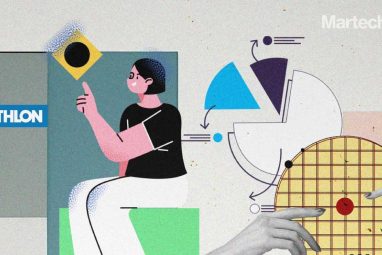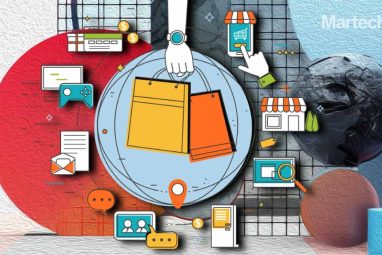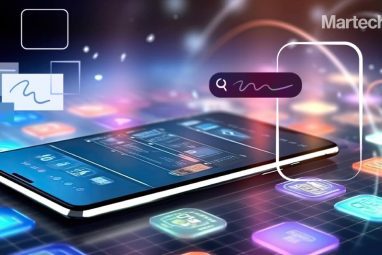How Chatbots Can Enhance Customer Experience Using NLP
Chatbots have sparked a debate about their effectiveness and appeal to customers. A lot of it depends on how customers feel about talking to a bot during customer service requests. That’s where NLP comes in. NLP, or Natural Language Processing, as per Gartner, is a technology that “involves the ability to turn text or audio […]
Chatbots have sparked a debate about their effectiveness and appeal to customers. A lot of it depends on how customers feel about talking to a bot during customer service requests. That’s where NLP comes in.
NLP, or Natural Language Processing, as per Gartner, is a technology that “involves the ability to turn text or audio speech into encoded, structured information, based on an appropriate ontology.” In layman’s terms, it means that NLP helps AI to understand what a human is trying to convey.
The most direct application of NLP in AI is through chatbots. Chatbots are nothing but computer-generated AI programs that initiate and have conversations with customers; from helping them to choose a product or service for their needs, provide support after sales, chatbots are capable of a host of activities. Chatbots provide a conversational experience
- Chatbots can work 24/7, saving up to 40 per cent of customer support cost for companies.
- Chatbots can speed up enquiries by about 80 per cent.
- According to estimates, 67% of consumers globally are using chatbots for customer support
- It is estimated that by 2020, about 85% of customer interaction will be handled by non-human agents via chatbots.
However, sometimes customers can tell if they are engaging with a bot during a customer service request, and feel that a machine might not understand their problem, hampering customer experience. This is where NLP can step in.
Also Read: How AI is Improving Predictive Analytics
Transforming Customer Experience
Brands like Facebook are offering their services with text and voice-based communications via their messenger.
Any brand that wants to get aggressive to improve and retain their customer base will prefer to rely on NLP technology. NLP will not only reduce costs for the company and but also help make the customer experience more authentic.
Customers are now contacted real-time without much effort, and their queries and feedbacks are noted every second allowing companies to improve. These chatbots can identify the question and answer it with all the information required. It also has the power to etch out necessary details out of the conversation and plating it for use. This enables the companies to empower their customer assistance process, thereby recording great reviews for themselves.
The incoming support tickets can be analysed and processed much before a live agent gets to see it. This is enabled by NLP, and chatbots then prioritise the calls and route them to the relevant agent. If the request is not complicated, then it is carried forward by the chatbot itself.
NLP also helps seek and collect information during such calls. This will be integrated with CRM and internal databases so that the human agents can deal with future problems. ServiceNow recently designed a platform that helps service workers prioritise different tasks. They find information on the company’s records and knowledge bases.
How Chatbots Enhance CX
Simple chatbots use less complicated yet hard-coded programming to give options. They become rigid and cannot operate beyond the limit that has been set for them. However, with the use, NLP chatbots have become capable of interpreting the inputs provided and give responses accordingly.
This provides a thorough conversational experience. Companies are now replacing customer service reps with chatbots, making interaction possible any time of the day. With further improvement in NLP, chatbots are expected to perform various complex activities.
Also Read: Boosting Sales ROI With an Analytics-based Strategy
Some of the reasons why chatbots are an excellent way for optimising customer service include:
Zero Waiting Time
The most apparent benefit of NLP enabled Chatbot is the zero waiting time. Customers do not like waiting if they have a query. If we make them wait, it can result in the loss of the customer. Even live human agents would want time off, and if the customer query comes in the non-working hours it might result in churn. Chatbots give an instant response to the demands they have. Businesses spend about $1.3 trillion on about 265 billion customer service calls each year. Chatbots help businesses save a lot on customer costs due to the speeding up mechanism. Auto Desk which is a 3D computer-aided design company has its service chatbot which response to query 24/7/365.
Some efficient gains were registered by Auto desk based on platform enabled by Watson Conversation. They were as follows:
- 99% increase in response times.
- The sharp decline in per-query cost from USD 15 – 200 in the case of human agents to USD 1 in the case of virtual agents.
- A virtual agent has handled more than 30,000 customer queries per month, which is way higher than any human figure.
- It can easily make out 40 different types of cases to resolve diverse requests.
Faster Resolution
With the waiting time, reduced customers are assured that they are not just heard, but also their queries are actioned upon. Chatbots record all information about various questions in a systematic manner. This sifted data then provides the company enough data on resolution of problems especially when it is escalated.
Optimisation of Costs
When we rely on virtual agents, our dependency on manpower has reduced. This has not just reduced costs but also optimised it. According to Chatbots Magazine, up to 30% of costs are reduced when virtual agents are brought into the picture. When human agents are freed from the usual queries, they can give time to complex issues and provide better services. Employee attrition also has been a major problem in the customer service industry. According to QATC report attrition rates in the call centre industry are two times more than the overall industry average.
Agent Transfers are Reduced
Chatbots come with an additional benefit of routing the right query to the right agent. A chatbot, combined with NLP and automated routing, ensures that the process takes place accurately and instantly. Transfers between different categories and departments happen at a faster pace.
Also Read: Quantzig Releases Paper on Social Listening to Improve Customer Engagement
Provides Business Insights
This is perhaps the most powerful use of NLP and chatbot. Phone calls present heaps of data which is filtered by the company for its use. But the way to sort and use it in the context is what NLP does. Sentiment analysis allows companies to correlate emotional content in the communication which lets them prioritise.
Apart from enhancing customer experience on calls, chatbots also help raise the bar for better customer experience. Following are some examples:
- Starbucks app is chatbot-enabled and helps place swift orders through voice command or text messaging. The chatbot will inform when the order will be ready and what the cost will be for the entire order.
- Whole Foods bot helps customers search for unique recipes on their Facebook messenger. It understands the use of emojis during the search process and lets the customer filter recipes based on their dietary needs.
- Mastercard, too, has a bot that operates through Facebook Messenger. It tracks your account and spending and can tell you about your various expenses based on the category.
- Wall Street Journal chatbot allows you to be able to stay updated on the latest news updates, stock quotes, and other financial metrics.
While chatbots are nowhere close to replacing their human counterparts, NLP has helped the technology come a long way in improving customer experience.






